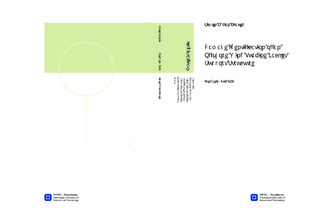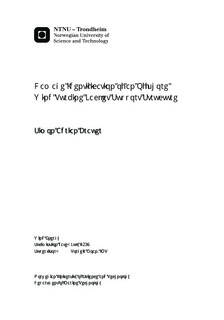| dc.description.abstract | Due to the variable and stochastic offshore environment, offshore wind turbines are prone to fatigue. Fatigue damage usually occurs as cracks and is an important indicator of the structure's condition and the remaining life-time. However, the detection of fatigue cracks today is very cumbersome and easier and more straight-forward methods are desirable. In this thesis, it is investigated whether fatigue damage can be identified or detected based on operational vibrations. The idea is that sensors like accelerometers are placed at the offshore wind turbine, for example at the relatively easily accessible tower, to monitor the structure's response over time. Changes of the dynamic characteristics over time might then be an indicator for structural damage. To this end, an offshore wind turbine jacket support structure model is developed in Matlab by means of the finite element method. Realistic operational conditions are assumed and loads from wind and waves calculated accordingly. Models to represent a crack in structural members are reviewed and suitable methods are combined and adapted to fit the present model. To account for measurement and model errors, a Kalman filter is implemented that gives an optimal estimate for the structure's response. The response is then calculated for an undamaged support structure model and a support structure model, where at a certain location a crack has been simulated. The severity of the damage is varied and the effects are investigated. In an eigenvalue analysis it is found that the effect of the damage on the eigenfrequencies is small. Higher local brace modes at the crack location are affected most, however in a small order of magnitude. Based on ambient vibrations due to wind and waves the response of the support structure is investigated. In an attempt to amplify the deviation between the undamaged and the damaged support structure, a forced harmonic vibration is introduced into the system. | nb_NO |

